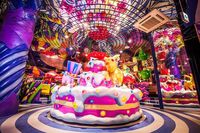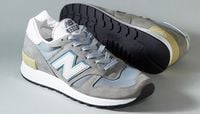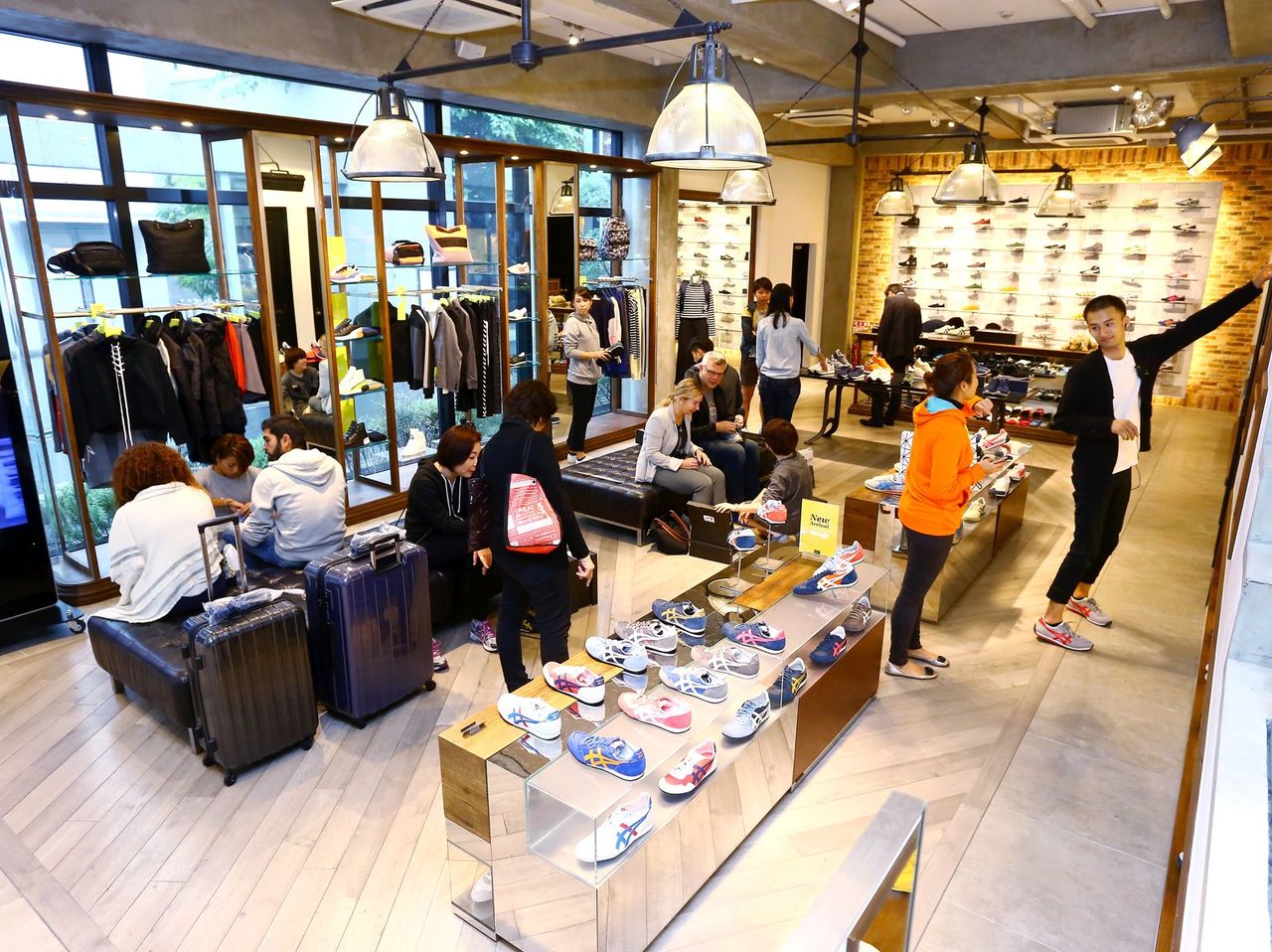
Foreign customers carrying suitcases are flocking to a building in Omotesando, Tokyo in droves. The outer walls of this unique building are decorated with tiger patterned claddings. Hence the name, Onitsuka Tiger Omotesando Shop.
This is the flagship store where Asics, one of the largest sportswear manufacturers in the world, is selling the revived version of their famous masterpiece athletic shoe -- the Asics Tiger.
Inside the shop you can hear English, Chinese, Thai, etc., and the heat is stifling even when the air conditioning is on. The Onitsuka shoes these people are after usually cost less than 20,000 yen ($165). The “Nippon-Made” Series -- manufactured solely in Japan using precise detailing and craftsmanship -- have price tags over 30,000 yen ($248). The number of monthly visitors has reached up to 40,000. A second shop was opened in Shibuya this spring due to the intense popularity of the flagship store.
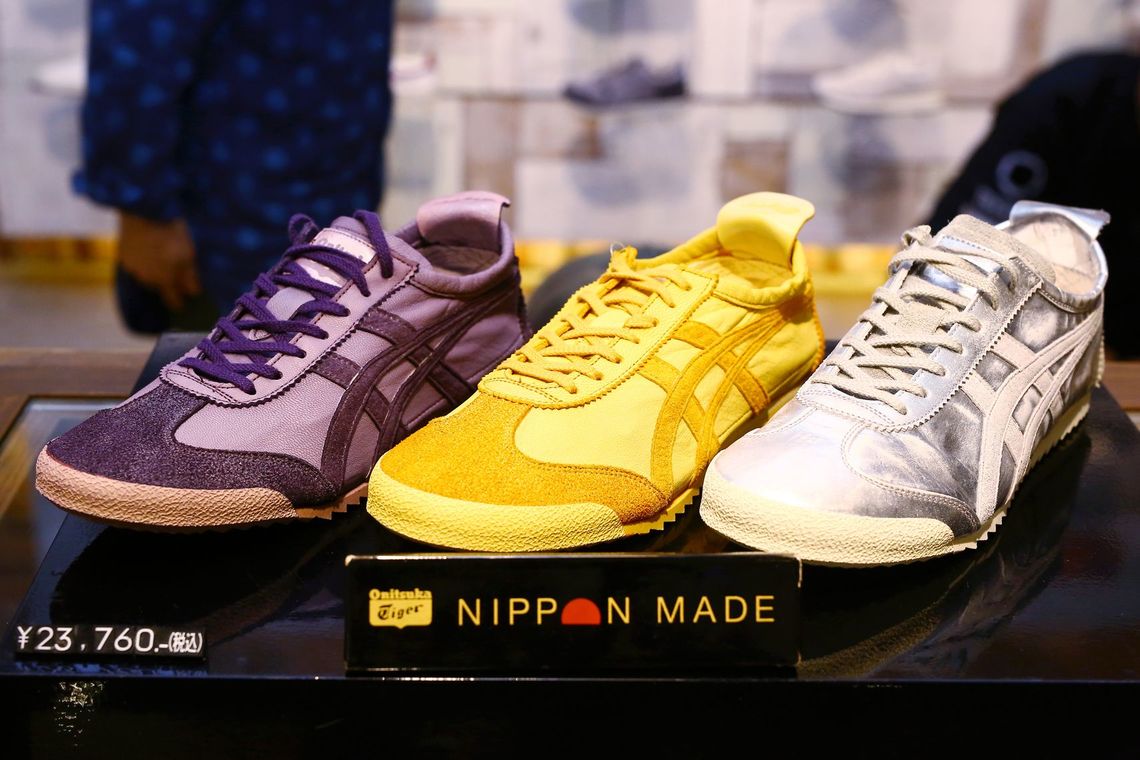
People are not just attracted to the Onitsuka brand name. Asics running shoes are hot in the European market as well. Furthermore, almost 50% of the runners who participated in the world famous New York City Marathon wore Asics shoes.
Due to the rapid but steady sales growth for both Onitsuka and Asics brands, the company’s shares are now 1.8 times higher than Mizuno -- a company which Asics used to compete against when Mizuno and Asics were the top two sportswear companies in Japan. The weak yen is working against Mizuno, whose overseas sales ratio remains at 30%, by driving up the costs of raw materials.
However, for Asics whose overseas sales ratio is around 80%, the weak yen works in the company’s favor. There is a good possibility that sales will reach a historical high of 400 billion yen ($3,314 million) by the year’s end. Asics has become a brand which can now compete for the third highest position in the world of sportswear, against the German brand Puma.
In January of this year, the company launched the Asics Tiger as the third brand to follow Asics and Onitsuka. This is a strategic brand developed to attack the “sport casual” market, mainstream in the U.S.
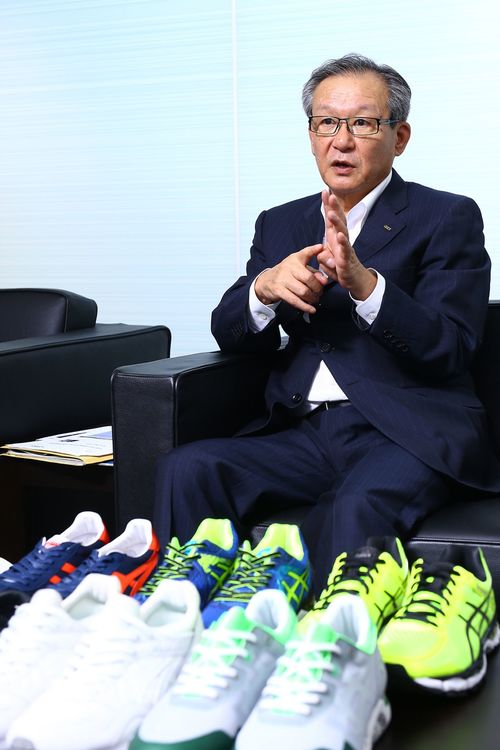
“I’ve been thinking about Kenya a lot lately. I’m wondering if I should establish a company there and start an export business,” ponders President Motoi Oyama. He succeeded in expanding sales in Europe, the U.S. and Asia and increased the market capitalization by three times since assuming his position in the company has now set his sights on Africa, the last market in the world.
Although he is the son-in-law of the founder Kihachiro Onitsuka, he was not always in the higher echelons of the corporation and actually gained valuable experience by working in smaller, less profitable divisions within the company. He worked his way up and is now helping to revive the glory of this prestigious company.
Advancing overseas with the revival of Onitsuka
Asics was singlehandedly created by Onitsuka and has been recognized as a high quality shoe manufacturer by athletes around the world. Nike brand, which now holds the top spot in the market, used to be one of Onitsuka’s retailers.
This prestigious Asics company experienced a long slump between 1990 and the early 2000s. There were two reasons: a slump in the sales of ski and golf gear after the bubble economy burst and a decline in the sales of school physical education equipment, which was the main source of income for the company.
Although the company recovered from chronic deficits by reducing human resources and letting go of golf gear, the period of time in which its annual income fluctuated between 130 and 140 billion yen ($1,077-1,160 million) lasted almost ten years. The company was therefore unable to profit when sportswear items first started to become fashionable accessories vs. items used solely for athletic endeavors.
During this dry period, President Oyama was the managing director of athletic shoe sales. An Italian shoe buyer in Japan’s largest department store group Isetan suggested that Oyama revive Onitsuka. This idea was still on Oyama’s mind when he became the president of Asics Europe in 2001. As a result, when a manager in Italy also recommended that Asics revive Onitsuka, Oyama agreed.
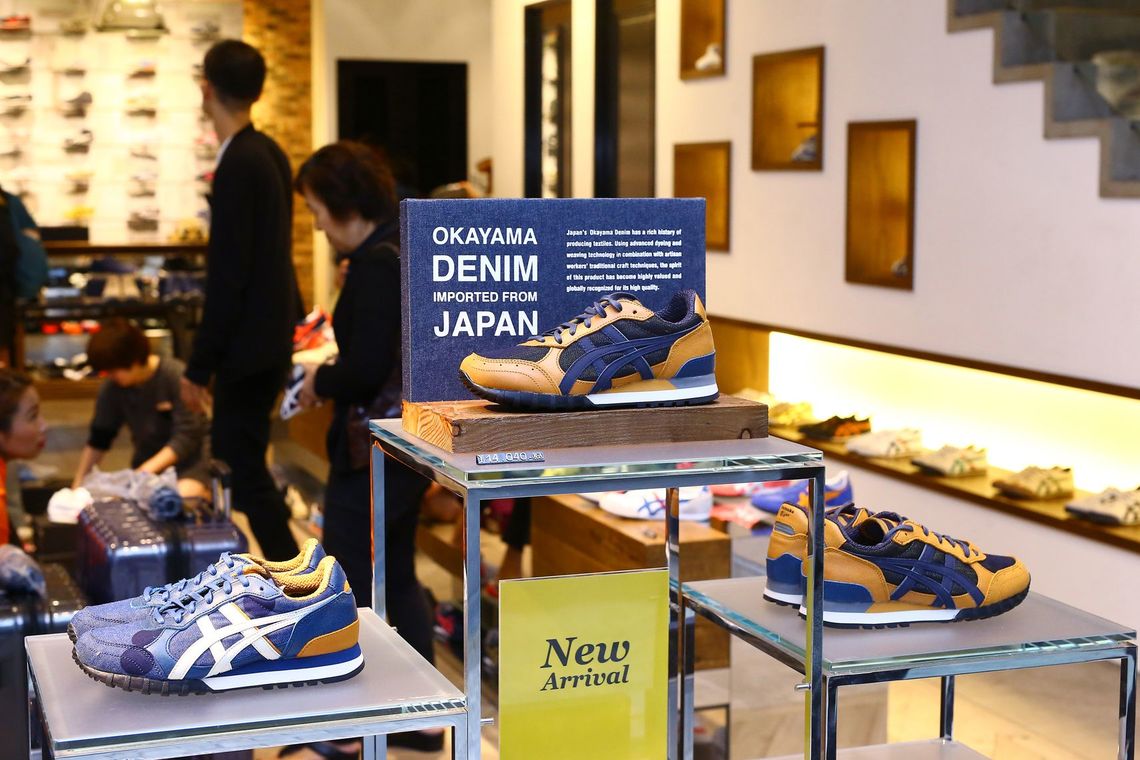
The company launched a revival of Onitsuka in the world market in 2002. The company limited its sales to boutiques and other select shops in order to create a more fashionable image. The following year, after the actress Uma Thurman wore a pair of yellow Onitsuka shoes (product name “Tai Chi”) in the movie Kill Bill, Onitsuka became an explosive hit with trendsetters overseas.
President Oyama totally reformed the European company by replacing personnel and unifying its financial management. The company which once calculated an annual loss of 10 billion yen ($82 million) became a profit-making company in two years.
This reformation paid off, and Asics’ overseas sales exceeded domestic sales in March 2006. The company began to sponsor popular marathon events in worldwide locations, including New York and Paris, one after another.
The company strategically chose new branch locations within five minutes walk of each train station or near popular running areas. For example, the company opened shops near Hyde Park in London and Central Park in New York so that they would essentially become showrooms for runners who were not already familiar with Asics.
Shocking cost-cutting measures
With the current financial period being the highest it has ever been, Asics has surprisingly conducted its first-ever human resource restructuring in 19 years. The company asked 350 employees (almost 2% of the total number) in the domestic business division to voluntarily retire in September. The cost reduction is expected to be 2.5 billion yen ($20 million) per year.
Other surprising measures have been taken by Asics. One such example was a decision to cancel the product supply to an athletic store in Australia which has been selling Asics products for over 30 years.
President Oyama has made these strong restructuring decisions in order to actively compete with the top brands in the sportswear business. Asics is now the top brand in Japan and third in the world. However, Nike with sales of 3,800 billion yen ($31 billion) and Adidas with the sales of 2,000 billion yen ($16 billion) are still huge contenders.
In order to catch up with the top companies and move ahead of any newcomers, it is essential for Asics to maintain profitability and to continuously invest in its products and stores.
Although President Oyama was the next person to lead the company after the founder, his management decisions seem to be very different from those of Onitsuka who placed more importance on the relationship with employees and business partners, often remarking during his tenure that “we are all in the same boat”. Although the future remains uncertain and trends are constantly changing, we wonder just how far President Oyama’s mix of both hard and soft approaches will take the Asics company.


